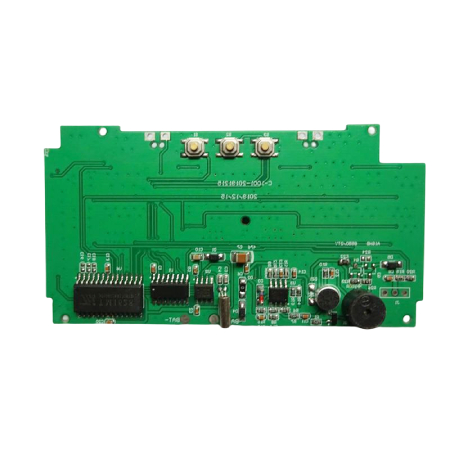Cold soldering and false soldering in PCBA processing will seriously affect the quality of product use, so PCBA processing needs to reduce false soldering and false soldering to a minimum. The following will introduce the causes and solutions of cold soldering and false soldering in PCBA processing.

What is a cold solder joint? A cold solder joint refers to the existence of an isolation layer between the solder and the pin, that is, the contact between the component and the pad is poor. They are not completely in contact, which is generally not visible to the naked eye, but their electrical characteristics are not conductive or poorly conductive, affecting the circuit characteristics.
What is a false solder joint? A false solder joint is similar to a cold solder joint. It is a phenomenon that the circuit works normally in the early stage and gradually becomes open in the later stage.
1. What causes cold solder joints/false solder joints?
1. Oxidation of solder pads and component pins
It is easy to cause the solder paste to not fully infiltrate the solder pad in a liquefied state during reflow soldering, and to crawl tin, resulting in cold solder joints.
2. Insufficient tin
During the solder paste printing process, due to the small opening of the steel mesh or the small pressure of the scraper, there is insufficient tin, so that during welding, the amount of solder paste is insufficient and the components cannot be fully welded.
3. Too high or too low temperature
If the temperature is too high, not only will the solder flow, but also the surface oxidation rate will be increased, which may also cause cold solder joints.
4. Low melting point of solder paste
Low-temperature solder paste has a relatively low melting point, and the component pins and the board materials of the fixed components are different, and their thermal expansion coefficients are different. Over time, with the change of the working temperature of the components, under the action of thermal expansion and contraction, a cold solder joint will occur.
5. Solder paste quality problem
Poor solder paste quality, easy oxidation of solder paste, and loss of flux will directly affect the solder paste's welding performance, leading to cold solder joints/false solder joints.
2. Solutions to cold solder joints/false solder joints
1. Moisture-proof storage of components:
PCBA processing plants are equipped with ovens, which can bake components with moisture during welding and replace oxidized components.
2. Choose solder paste from well-known brands:
The cold solder joints and false solder joints that occur during PCBA welding are closely related to the quality of solder paste.
3. Adjust printing parameters:
During the printing process, adjust the pressure of the scraper, select a suitable steel mesh, and do not make the steel mesh mouth too small to avoid too little tin.
4. Adjust the reflow soldering temperature curve:
During the reflow soldering process, the soldering time must be controlled. If the time in the preheating zone is not enough, the flux cannot be fully activated and the surface oxides at the soldering point cannot be removed. If the time in the soldering zone is too long or too short, it will cause cold soldering and false soldering.
5. Choose the right inspection equipment:
Choose AOI inspection equipment or X-ray inspection equipment to inspect the welding quality and reduce the outflow of defective products with cold soldering and false soldering.
The above is an introduction to "Causes and solutions for cold soldering and false soldering in PCBA processing". I hope it will be helpful to everyone. For more PCBA information, please pay attention to the content updates of this site!
